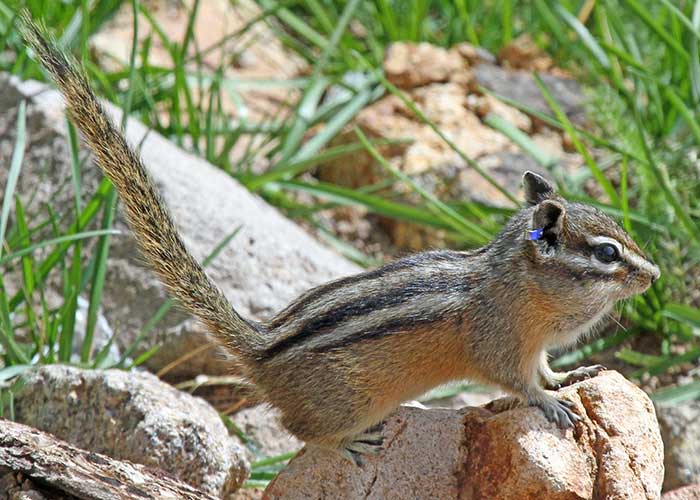Federal officials have until August to decide if a New Mexico chipmunk should be protected
A chipmunk native to the Sacramento Mountains in Lincoln National Forest could see federal protections this year after a judge ruled wildlife managers must issue a decision in the coming months.
The Peñasco least chipmunk was one of 15 species around the nation at the center of a lawsuit filed by the Center for Biological Diversity against the U.S. Fish and Wildlife Service, alleging the agency so far failed to act in preventing the species’ extinction amid petitions to do so.
In an April 25 settlement agreement filed in U.S. District Court for the District of Arizona, the parties agreed to set deadlines on decisions of whether to list the species as endangered or threatened under the Endangered Species Act.
An “endangered” listing is the highest level of federal protection, enacted when extinction is imminent. “Threatened” means conditions could soon warrant a species be listed as endangered. If it is listed as endangered, the U.S. Fish and Wildlife Service would be required to establish a recovery plan for the Peñasco least chipmunk, and likely set aside lands in its known range as “critical habitat” where its population could regrow.
A deadline of Aug, 15, 2024 was set for the Peñasco least chipmunk, meaning federal officials must decide by then to list the species and begin recovery efforts.
More: Lawsuit calls for gray wolf protections in the American West. Could it affect New Mexico?

The U.S. Fish and Wildlife Service proposed listing the chipmunk as endangered in September 2021, in response to a 2011 petition from Santa Fe-based WildEarth Guardians. The included 6,574 acres of critical habitat in the Sacramento and White mountains areas where the species was known to survive. In June 2023, the Center for Biological Diversity filed a lawsuit against the agency, arguing it had failed to make a final decision by the one-year deadline created by the proposal.
Today, the chipmunk is known to only dwell in Lincoln and Otero counties, threatened by climate change including wildfires and development like logging or livestock grazing in the species’ native forest habitat.
Noah Greenwald, endangered species director at the Center for Biological Diversity said voluntary conservation measures taken by landowners with oversight by the Fish and Wildlife Service have so far failed to adequately protect the chipmunk and many other imperiled species.
“The agency’s mantra of working with partners and voluntary conservation is largely a failure that greenwashes industries that provide the barest of crumbs for wildlife habitat,” Greenwald said. “The Service must implement the Endangered Species Act as worded.”
The Fish and Wildlife’s proposal to list the chipmunk was opposed by the New Mexico Farm and Livestock Bureau which argued such an action would restrict the agriculture industry by limiting access to lands for activities like livestock grazing.
Director of Government Affairs Tiffany Rivera wrote in comments submitted to the agency that the Service should instead “explore” voluntary conservation measures with local landowners to prevent negative impacts on their businesses.
More: No jaguars in New Mexico as feds deny request to recover species in Gila National Forest
She said livestock grazing was essential to the ranching industry and can help remove fuel for wildfires. The “most critical” threats to the species like wildfires, forest shifts and disease should be managed in collaboration with stakeholders, Rivera wrote.
“We oppose the listing of additional species as threatened or endangered under the Endangered Species Act as written,” read the comments. “NMF&LB urges the U.S. Fish and Wildlife Service to instead explore options to work in collaboration with local affected stakeholders to employ voluntary conservation programs to ensure respect for private property rights and best uses of the land in their efforts.”
In its submitted comments, the New Mexico Department of Game and Fish supported the proposed listing, offering to continue working with the federal agency and New Mexico State University to research impacts to the species and measures to restore its population.
“The Department concurs with the major conclusions of the proposed rule, including the need for additional protection of the subspecies and its limited habitat,” read the Department’s comments.
Adrian Hedden can be reached at 575-628-5516, achedden@currentargus.com or @AdrianHedden on the social media platform X.
This article originally appeared on Carlsbad Current-Argus: New Mexico chipmunk awaiting decision on protect species status
